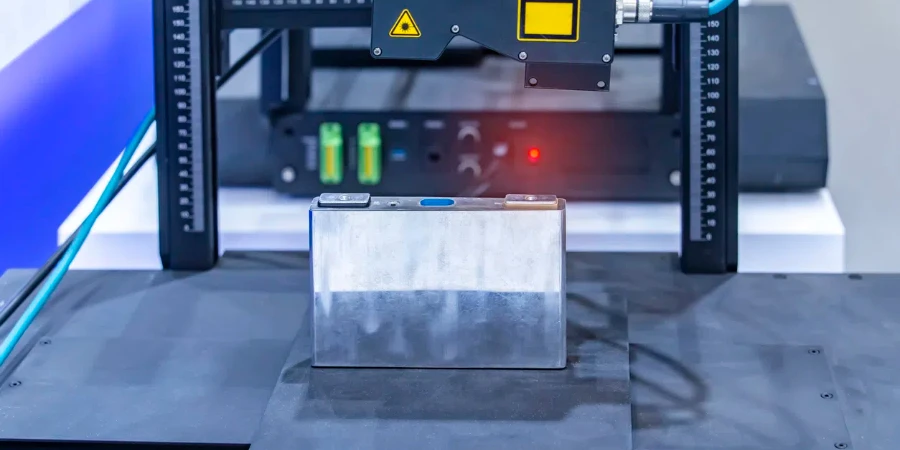The laser cleaning machine market is set to grow significantly in 2025, driven by advancements in eco-friendly and non-abrasive cleaning solutions. This article provides an in-depth analysis of the core features, performance metrics, and cost considerations essential for professional buyers. It aims to assist wholesalers, retailers, and purchasing professionals in making informed decisions to enhance their product offerings and operational efficiency.
Table of Contents:
– Understanding the Laser Cleaning Machine Market
– Core Features to Consider When Selecting a Laser Cleaning Machine
– Evaluating Performance and Efficiency
– Comparing Different Types of Laser Cleaning Machines
– Cost Considerations and ROI
– Emerging Trends in Laser Cleaning Technology
– Making the Final Decision
Understanding the Laser Cleaning Machine Market
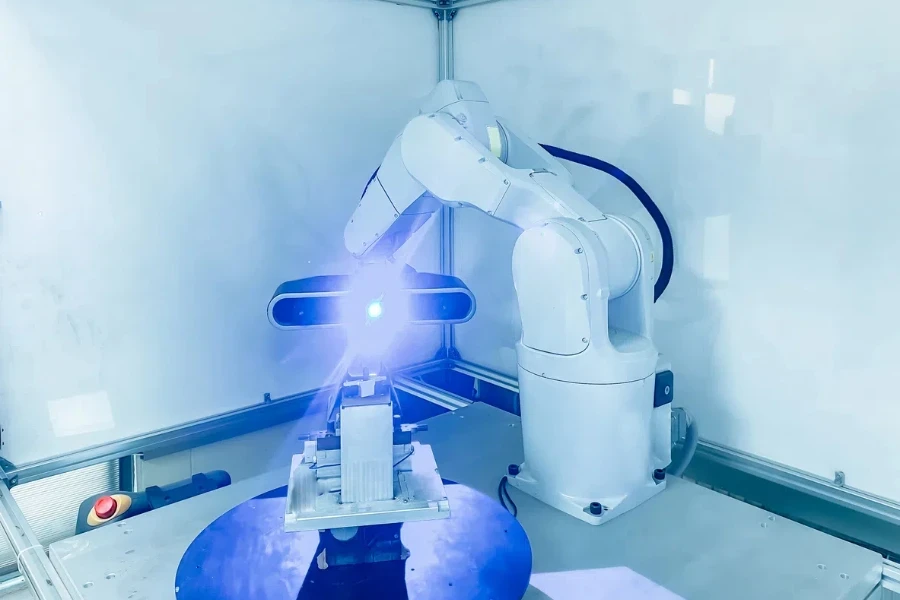
Key Market Drivers
The laser cleaning machine market is experiencing robust growth, driven by several key factors. The global market size was worth USD 897.75 million in 2023 and is projected to reach USD 1.28 billion by 2030, growing at a CAGR of 5.25%. This growth is primarily fueled by the increasing demand for non-abrasive and eco-friendly cleaning solutions across various industries. The automotive, aerospace, and manufacturing sectors are particularly significant contributors, as they seek efficient methods to remove contaminants, rust, and coatings without damaging the underlying material.
Technological advancements in laser cleaning machines are also a major driver. Innovations such as the integration of IoT and AI for enhanced control and automation are making these machines more efficient and user-friendly. For instance, the development of fiber lasers, which offer higher precision and lower energy consumption compared to traditional CO2 lasers, is significantly boosting market adoption. Additionally, the rising awareness of the benefits of laser cleaning, such as reduced maintenance costs and improved safety, is further propelling market growth.
The expanding application scope of laser cleaning machines is another critical factor. These machines are increasingly being used in heritage conservation, where they provide a non-invasive method to clean and restore historical artifacts. The electronics industry is also adopting laser cleaning for precision cleaning of components. The versatility of laser cleaning machines in handling various materials, including metals, plastics, and composites, is broadening their market appeal and driving demand across multiple sectors.
Major Industry Players
The laser cleaning machine market is highly competitive, with several key players driving innovation and market growth. Leading companies such as TRUMPF SE + Co. KG, Coherent Corp., and IPG Photonics Corporation are at the forefront of this industry. TRUMPF, for instance, is renowned for its advanced laser technology and extensive product portfolio, which includes high-performance laser cleaning systems designed for industrial applications. Their focus on R&D and strategic partnerships has solidified their market position.
Coherent Corp. is another major player, known for its cutting-edge laser solutions and strong global presence. The company has been investing heavily in developing new laser cleaning technologies that offer higher efficiency and precision. Their recent product launches have been well-received in the market, further strengthening their competitive edge. Similarly, IPG Photonics Corporation is a key player, leveraging its expertise in fiber laser technology to offer innovative cleaning solutions that cater to diverse industrial needs.
Other notable players include LaserStar Technologies Corporation, Jinan Senfeng Laser Technology Co., Ltd., and Han’s Laser Technology Industry Group Co., Ltd. These companies are focusing on expanding their product lines and enhancing their global distribution networks to capture a larger market share. The competitive landscape is characterized by continuous innovation, strategic collaborations, and a strong emphasis on customer-centric solutions, which are driving the overall growth of the laser cleaning machine market.
Regional Market Insights
The laser cleaning machine market exhibits significant regional variations, with North America, Europe, and Asia-Pacific being the primary markets. North America, particularly the United States, holds a substantial market share due to the high adoption of advanced manufacturing technologies and stringent environmental regulations. The region’s focus on sustainable and eco-friendly cleaning solutions is driving the demand for laser cleaning machines. Additionally, significant investments in R&D and the presence of major industry players are contributing to market growth.
Europe is another key market, characterized by a strong emphasis on energy efficiency and environmental sustainability. Countries like Germany, France, and the United Kingdom are leading the adoption of laser cleaning technologies, driven by stringent regulatory frameworks and high consumer awareness. The region’s well-established industrial base and ongoing advancements in laser technology are further propelling market growth. The European market is also witnessing increased demand from the automotive and aerospace sectors, which are key end-users of laser cleaning machines.
The Asia-Pacific region is experiencing rapid growth, driven by the expanding manufacturing sector and increasing industrialization in countries like China, Japan, and India. The region’s booming automotive and electronics industries are significant contributors to the demand for laser cleaning machines. Additionally, the growing focus on improving production efficiency and reducing environmental impact is driving the adoption of advanced cleaning technologies. The Asia-Pacific market is expected to witness the highest growth rate during the forecast period, supported by favorable government initiatives and increasing investments in industrial infrastructure.
Core Features to Consider When Selecting a Laser Cleaning Machine
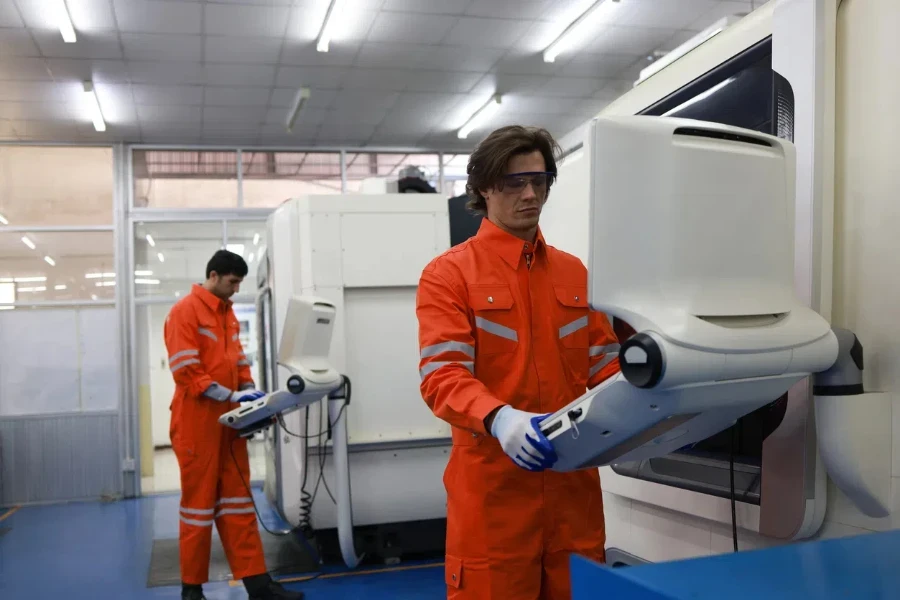
Power and Wavelength
When selecting a laser cleaning machine, power and wavelength are critical factors to consider. The power of the laser determines its cleaning efficiency and speed. High-power lasers, typically ranging from 100 to 1000 watts, are suitable for heavy-duty cleaning tasks such as rust removal and paint stripping. These lasers can quickly and effectively remove thick layers of contaminants, making them ideal for industrial applications. On the other hand, low-power lasers, ranging from 20 to 100 watts, are better suited for delicate cleaning tasks that require precision, such as cleaning electronic components or historical artifacts.
The wavelength of the laser also plays a crucial role in its cleaning performance. Different materials absorb laser energy at different wavelengths, so selecting the appropriate wavelength is essential for effective cleaning. For instance, fiber lasers, which operate at a wavelength of around 1064 nm, are highly effective for cleaning metals due to their high absorption rate. CO2 lasers, operating at a wavelength of 10.6 µm, are better suited for cleaning non-metallic materials such as plastics and composites. Understanding the material properties and selecting the appropriate wavelength ensures optimal cleaning results and prevents damage to the underlying substrate.
Additionally, the choice of power and wavelength impacts the overall cost and energy consumption of the laser cleaning machine. High-power lasers typically consume more energy and may require additional cooling systems, increasing operational costs. Therefore, it is essential to balance the power and wavelength requirements with the specific cleaning application to achieve cost-effective and efficient cleaning solutions. Consulting with laser cleaning experts and conducting material tests can help in selecting the most suitable laser parameters for the intended application.
Portability and Size
Portability and size are important considerations when selecting a laser cleaning machine, especially for applications that require mobility and flexibility. Portable laser cleaning machines are designed to be lightweight and compact, making them easy to transport and operate in various locations. These machines are ideal for field applications, such as cleaning large structures, pipelines, and outdoor equipment. The portability of the machine allows operators to perform cleaning tasks in hard-to-reach areas and reduces the need for extensive setup and dismantling.
The size of the laser cleaning machine also affects its usability and storage requirements. Compact machines with a small footprint are suitable for workshops and facilities with limited space. These machines can be easily integrated into existing production lines and do not require significant modifications to the workspace. Additionally, smaller machines are often more user-friendly and require less maintenance, making them a practical choice for small and medium-sized enterprises.
However, it is important to ensure that the portability and size of the machine do not compromise its performance and capabilities. Portable and compact machines should still offer sufficient power and precision to meet the cleaning requirements. Evaluating the specific needs of the application and considering factors such as cleaning area, material type, and frequency of use can help in selecting a machine that provides the right balance of portability, size, and performance.
Automation and Software Integration
Automation and software integration are key features to consider when selecting a laser cleaning machine, as they significantly enhance the efficiency and ease of operation. Automated laser cleaning machines are equipped with advanced control systems that allow for precise and consistent cleaning. These systems can be programmed to perform specific cleaning tasks, reducing the need for manual intervention and minimizing the risk of human error. Automation also enables faster cleaning cycles and improves overall productivity, making it ideal for high-volume industrial applications.
Software integration further enhances the capabilities of laser cleaning machines by providing advanced monitoring and control features. Modern laser cleaning machines are often integrated with computer-aided design (CAD) and computer-aided manufacturing (CAM) software, allowing operators to create and execute complex cleaning patterns with high precision. These software tools enable real-time monitoring of the cleaning process, providing valuable data on parameters such as laser power, speed, and cleaning depth. This data can be used to optimize the cleaning process and ensure consistent quality.
Additionally, the integration of IoT and AI technologies in laser cleaning machines is becoming increasingly common. IoT-enabled machines can be connected to a central network, allowing for remote monitoring and control. This connectivity enables predictive maintenance, where potential issues can be identified and addressed before they lead to machine downtime. AI algorithms can also analyze cleaning data to optimize parameters and improve efficiency. The combination of automation and software integration provides a powerful solution for achieving high-quality and efficient cleaning results.
Safety Features
Safety is a paramount consideration when selecting a laser cleaning machine, as the high-intensity laser beams used in these machines can pose significant risks to operators and the surrounding environment. Modern laser cleaning machines are equipped with various safety features to ensure safe operation. One of the primary safety features is the inclusion of protective enclosures or barriers that prevent accidental exposure to the laser beam. These enclosures are designed to contain the laser radiation and protect operators from direct and reflected laser light.
Another important safety feature is the integration of interlock systems that automatically shut down the laser if the protective enclosure is opened or if any safety parameters are breached. These interlock systems provide an additional layer of protection by preventing the laser from operating under unsafe conditions. Additionally, laser cleaning machines are often equipped with emergency stop buttons that allow operators to quickly halt the operation in case of an emergency.
Personal protective equipment (PPE) is also essential for ensuring operator safety. Operators should wear appropriate laser safety goggles that are designed to protect against the specific wavelength of the laser being used. Other PPE, such as gloves and protective clothing, may be required depending on the cleaning application. Proper training and adherence to safety protocols are crucial for minimizing risks and ensuring safe operation. Manufacturers often provide comprehensive safety guidelines and training programs to educate operators on the safe use of laser cleaning machines.
Evaluating Performance and Efficiency
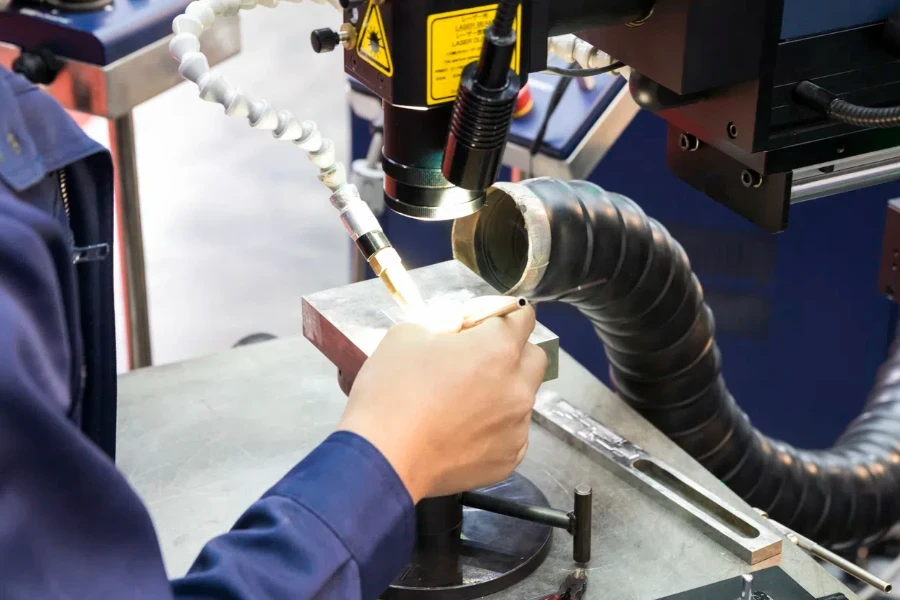
Cleaning Speed
Cleaning speed is a critical performance metric for laser cleaning machines, as it directly impacts productivity and operational efficiency. The cleaning speed of a laser cleaning machine is determined by several factors, including the laser power, beam quality, and scanning speed. High-power lasers can remove contaminants more quickly, making them suitable for applications that require rapid cleaning. For instance, a 1000-watt laser can clean surfaces at a rate of up to 20 square meters per hour, significantly reducing cleaning time compared to traditional methods.
The beam quality and scanning speed also play a crucial role in determining the cleaning speed. High-quality laser beams with a narrow focus can achieve precise and efficient cleaning, while fast scanning speeds enable the laser to cover larger areas in a shorter time. Advanced laser cleaning machines are equipped with high-speed galvanometer scanners that can achieve scanning speeds of up to 7000 millimeters per second. These scanners allow for rapid and uniform cleaning, making them ideal for high-volume industrial applications.
However, it is important to balance cleaning speed with the quality of the cleaning process. High-speed cleaning may not always be suitable for delicate or intricate surfaces that require precision. Therefore, it is essential to evaluate the specific cleaning requirements and select a machine that offers the right combination of speed and precision. Conducting material tests and consulting with laser cleaning experts can help in determining the optimal cleaning speed for the intended application.
Precision and Accuracy
Precision and accuracy are essential performance metrics for laser cleaning machines, particularly for applications that require detailed and intricate cleaning. The precision of a laser cleaning machine is determined by the laser beam quality, spot size, and control system. High-quality laser beams with a small spot size can achieve precise cleaning with minimal impact on the surrounding material. For instance, fiber lasers with a spot size of less than 50 micrometers can clean fine details and intricate patterns with high accuracy.
The control system of the laser cleaning machine also plays a crucial role in achieving precision. Advanced control systems with real-time monitoring and feedback mechanisms ensure consistent and accurate cleaning. These systems can adjust the laser parameters based on the material properties and cleaning requirements, providing precise control over the cleaning process. Additionally, the integration of CAD and CAM software allows operators to create and execute complex cleaning patterns with high precision.
Accuracy is particularly important for applications such as heritage conservation, where the goal is to remove contaminants without damaging the underlying material. Laser cleaning machines with high precision and accuracy can achieve this by selectively removing unwanted layers while preserving the integrity of the substrate. The ability to control the cleaning depth and intensity ensures that only the contaminants are removed, leaving the underlying material intact. Evaluating the precision and accuracy of a laser cleaning machine is essential for achieving high-quality cleaning results.
Energy Consumption
Energy consumption is a critical factor to consider when evaluating the performance and efficiency of a laser cleaning machine. The energy consumption of a laser cleaning machine is influenced by the laser power, operating time, and cooling system. High-power lasers typically consume more energy, which can increase operational costs. For instance, a 1000-watt laser may consume up to 10 kilowatts of electrical power, depending on the efficiency of the laser source and cooling system.
However, advancements in laser technology have led to the development of more energy-efficient laser cleaning machines. Fiber lasers, for example, offer higher energy efficiency compared to traditional CO2 lasers. Fiber lasers can achieve energy efficiencies of up to 30%, significantly reducing energy consumption and operational costs. Additionally, modern laser cleaning machines are equipped with advanced cooling systems that optimize energy usage and minimize heat generation.
Energy consumption is also influenced by the operating time and cleaning speed. Faster cleaning speeds can reduce the overall operating time, leading to lower energy consumption. Therefore, it is essential to balance the cleaning speed with energy efficiency to achieve cost-effective cleaning solutions. Evaluating the energy consumption of a laser cleaning machine and considering factors such as power source, cooling system, and operating time can help in selecting an energy-efficient machine that meets the specific cleaning requirements.
Comparing Different Types of Laser Cleaning Machines
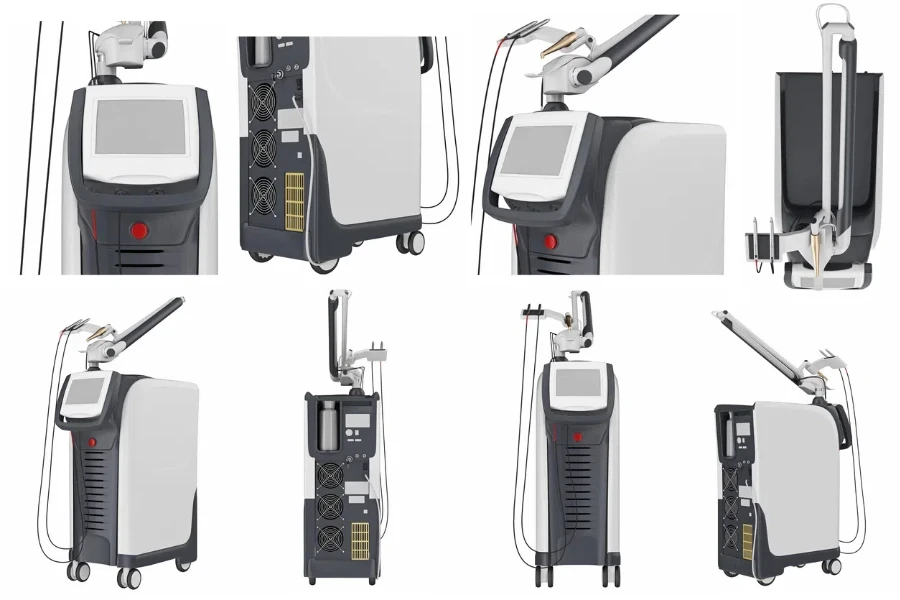
Pulsed vs. Continuous Wave Lasers
Laser cleaning machines can be classified into two main types based on the laser operation mode: pulsed lasers and continuous wave (CW) lasers. Pulsed lasers emit laser beams in short, high-intensity bursts, making them ideal for applications that require precision and minimal heat generation. The high peak power of pulsed lasers allows for effective removal of contaminants without damaging the underlying material. For instance, nanosecond pulsed lasers can achieve peak powers of up to 100 megawatts, providing efficient cleaning for delicate surfaces such as historical artifacts and electronic components.
Continuous wave lasers, on the other hand, emit a constant laser beam, making them suitable for applications that require high-speed cleaning and deep penetration. CW lasers are effective for removing thick layers of rust, paint, and coatings from large surfaces. The continuous emission of the laser beam ensures consistent cleaning, making CW lasers ideal for industrial applications such as automotive and aerospace manufacturing. However, the constant heat generation of CW lasers may pose a risk of thermal damage to sensitive materials.
The choice between pulsed and CW lasers depends on the specific cleaning requirements and material properties. Pulsed lasers are preferred for applications that require precision and minimal thermal impact, while CW lasers are suitable for high-speed and heavy-duty cleaning tasks. Evaluating the advantages and limitations of each type and considering factors such as cleaning speed, precision, and material compatibility can help in selecting the most appropriate laser cleaning machine for the intended application.
Fiber Laser vs. CO2 Laser
Fiber lasers and CO2 lasers are the two most common types of laser sources used in laser cleaning machines, each with its own advantages and applications. Fiber lasers operate at a wavelength of around 1064 nm and are known for their high efficiency, precision, and versatility. The small spot size and high beam quality of fiber lasers make them ideal for precision cleaning tasks, such as removing contaminants from electronic components and delicate surfaces. Additionally, fiber lasers offer higher energy efficiency and lower maintenance costs compared to CO2 lasers, making them a cost-effective choice for various industrial applications.
CO2 lasers, operating at a wavelength of 10.6 µm, are effective for cleaning non-metallic materials such as plastics, composites, and organic contaminants. The longer wavelength of CO2 lasers allows for deeper penetration and effective removal of thick layers of contaminants. CO2 lasers are commonly used in applications such as paint stripping, rust removal, and cleaning of large surfaces. However, CO2 lasers typically have lower energy efficiency and higher maintenance requirements compared to fiber lasers.
The choice between fiber lasers and CO2 lasers depends on the material properties and specific cleaning requirements. Fiber lasers are preferred for applications that require high precision and efficiency, while CO2 lasers are suitable for heavy-duty cleaning tasks involving non-metallic materials. Evaluating the advantages and limitations of each laser source and considering factors such as material compatibility, cleaning speed, and maintenance requirements can help in selecting the most suitable laser cleaning machine for the intended application.
Cost Considerations and ROI
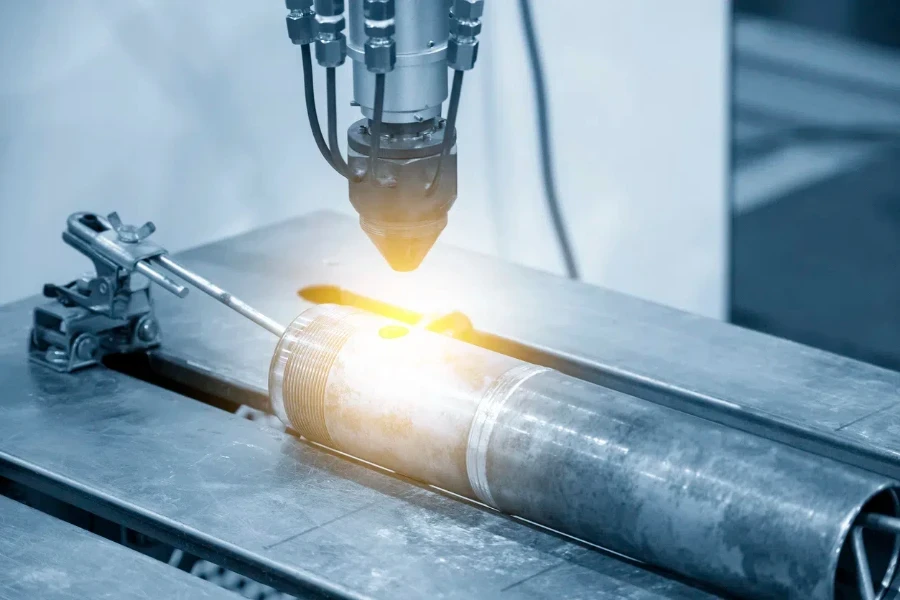
Initial Investment vs. Long-Term Savings
When evaluating the cost of laser cleaning technology, the initial investment is a significant factor. High-powered laser cleaning systems can range from $50,000 to $500,000 depending on the specifications and capabilities. However, this upfront cost can be offset by long-term savings in operational efficiency and reduced maintenance. For instance, traditional cleaning methods often require consumables like chemicals and abrasives, which add to ongoing expenses. In contrast, laser cleaning systems typically have lower operational costs since they do not rely on consumables.
The long-term savings also come from the increased lifespan of the equipment being cleaned. Laser cleaning is a non-contact process, which means it does not cause wear and tear on the surfaces being treated. This can significantly extend the life of machinery and components, reducing the need for frequent replacements. Additionally, the precision of laser cleaning reduces the risk of damage to delicate parts, further contributing to cost savings over time.
Moreover, laser cleaning systems can improve productivity by reducing downtime. Traditional cleaning methods often require disassembly and reassembly of equipment, which can be time-consuming. Laser cleaning, on the other hand, can be performed in situ, minimizing disruption to operations. This increased efficiency can lead to higher throughput and better utilization of resources, ultimately enhancing the return on investment (ROI).
Maintenance and Operating Costs
Maintenance and operating costs are crucial considerations when assessing the overall cost-effectiveness of laser cleaning technology. Laser systems generally require less maintenance compared to traditional cleaning methods. For example, there are no moving parts that come into contact with the surface being cleaned, which reduces wear and tear. Regular maintenance typically involves cleaning the laser optics and ensuring proper alignment, which can be done with minimal downtime.
Operating costs for laser cleaning systems are also relatively low. The primary cost is electricity, which is used to power the laser. Modern laser systems are designed to be energy-efficient, with many models consuming less than 10 kW of power. This is significantly lower than the energy consumption of some traditional cleaning methods, such as high-pressure water jets or chemical baths. Additionally, laser cleaning does not produce hazardous waste, eliminating the need for costly disposal procedures.
Another factor that contributes to lower operating costs is the reduced need for consumables. Traditional cleaning methods often require a continuous supply of chemicals, abrasives, or other materials. In contrast, laser cleaning relies solely on the laser beam, which does not deplete over time. This not only reduces costs but also simplifies inventory management and procurement processes. Overall, the lower maintenance and operating costs make laser cleaning an attractive option for many industries.
Emerging Trends in Laser Cleaning Technology
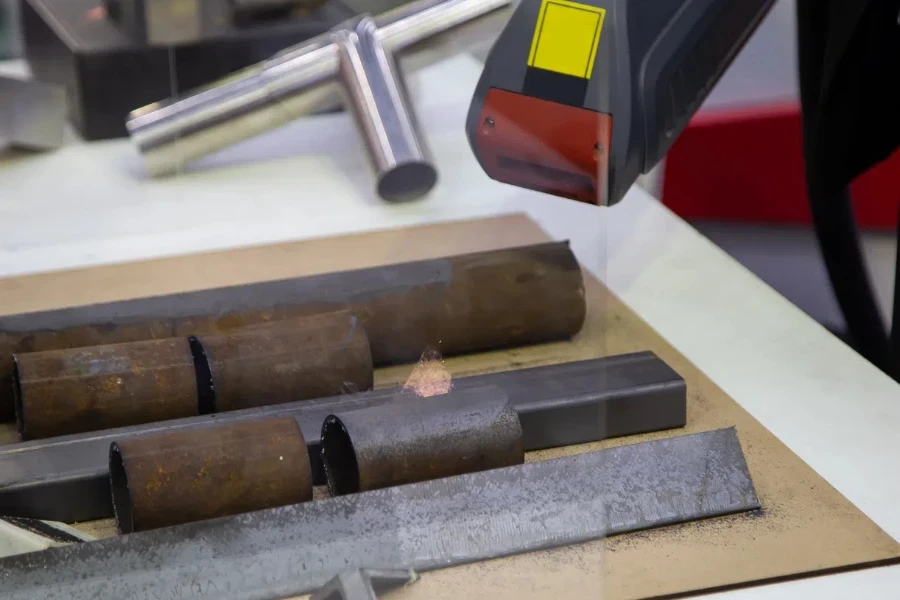
The laser cleaning technology landscape is rapidly evolving, with several emerging trends poised to shape the industry in 2025 and beyond. One significant trend is the development of more compact and portable laser cleaning systems. These systems are designed to be easily transported and used in various locations, making them ideal for fieldwork and on-site maintenance. Advances in fiber laser technology have enabled the creation of lightweight, high-powered systems that can deliver the same performance as larger, stationary units.
Another trend is the integration of artificial intelligence (AI) and machine learning (ML) into laser cleaning systems. AI and ML algorithms can optimize the cleaning process by adjusting parameters such as laser power, pulse duration, and scanning speed in real-time. This ensures that the cleaning is both efficient and precise, reducing the risk of damage to the underlying material. Additionally, AI-driven systems can learn from previous cleaning tasks, continuously improving their performance and adapting to different surfaces and contaminants.
Sustainability is also becoming a key focus in the development of laser cleaning technology. Manufacturers are increasingly looking for ways to reduce the environmental impact of their systems. This includes designing lasers that consume less energy and produce minimal waste. Some companies are also exploring the use of renewable energy sources to power their laser systems. By prioritizing sustainability, the laser cleaning industry can contribute to global efforts to reduce carbon emissions and promote environmentally friendly practices.
Making the Final Decision
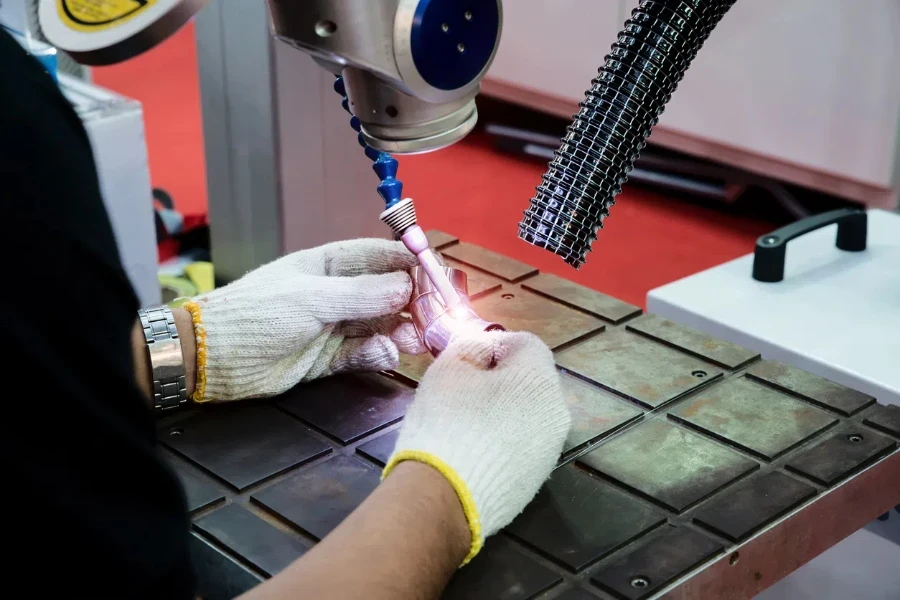
When making the final decision on investing in laser cleaning technology, it is essential to consider both the initial costs and long-term benefits. Evaluating the specific needs of your operation and comparing them with the capabilities of different laser systems can help determine the best fit. Additionally, staying informed about emerging trends and advancements in the industry can provide insights into future-proofing your investment.
